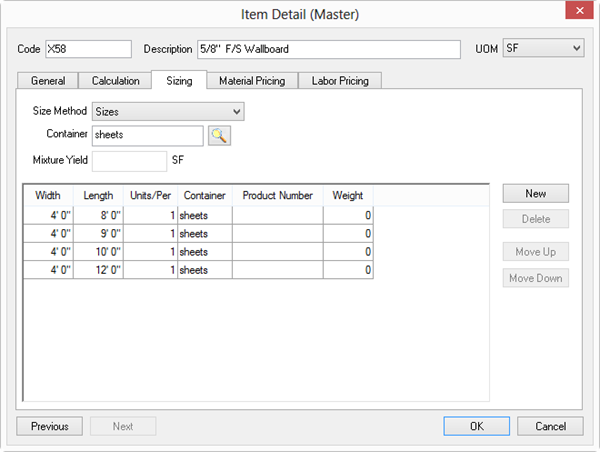The Size Method drop down provides options for describing the physical attributes of Material or Labor Item and defines the Container by which the product is usually purchased. The drop down menu presents five options that describe these physical characteristics – Sizes, Styles, Styles with Sizes, No Sizes, and Mixture. The UOM of the Item record (upper-right corner of the dialog box) controls which options are available.
Most UOMs (except for EA and volume UOMs such as CF, or m3) create a grid in the lower section of the dialog box with multiple columns for size, units in a container, container definitions, and weight.
Sizes
When you use "Sizes" as the Sizing method, you'll select your Container and then fill in the grid at the bottom.
In our example, we have for sizes of drywall sheets (our Container is "sheets" because that's how we're ordering this material from the Supplier).
You don't have to fill in every possible size right now - you can add Sizes "on-the-fly" from the Condition Detail dialog box. The sizes listed in the grid, however, show up on the Material and Labor (if this Item includes Labor) Pricing Tabs if you choose to price by Container.

Use this option to setup the most common sizes available for this Item. To add additional sizes, use the New button.
- If the UOM is linear, enter lengths only
- If the UOM is square, enter length and width
- If the UOM is EA or cubic, no size is required
The Units/Per column determines the pieces or coverage rate in a container. For example, 10 units/bundle, 10,000 units/box, 1 unit/ each, or 350 units/gallon. The container name is selected from the drop down menu. The Units/Per only converts the material quantity calculated into the number of containers required.
It is not necessary to enter every possible size for the item, only the most common sizes. Special/custom sizes may be entered directly at the
Condition Detail by clicking the size drop down menu and selecting
New.
